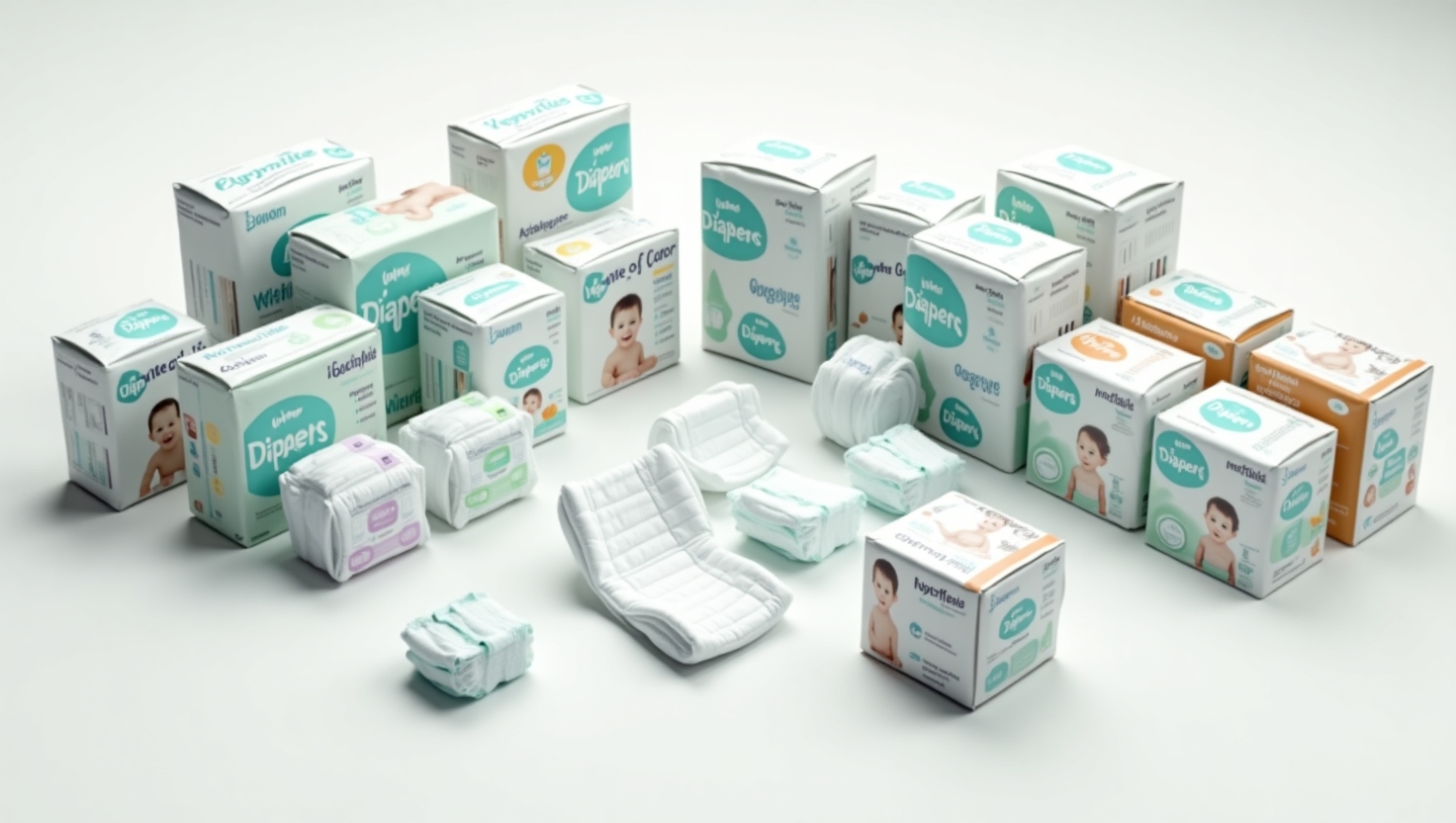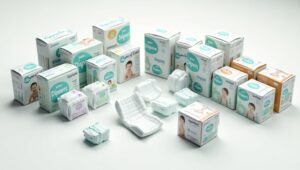Understanding and Managing Baby Diaper Rash: A Complete Guide for Parents
As a parent, one of the most common skin problems you’ll likely encounter during your baby’s first year is diaper rash—also known as nappy rash. It’s a red, inflamed, and often uncomfortable skin condition that appears in the diaper area. Though it’s usually not serious, it can cause distress for both babies and parents if left untreated. The good news is that with a little knowledge and care, diaper rash is highly manageable and preventable.
In this comprehensive guide, we’ll walk you through everything you need to know about diaper rash—from the causes and symptoms to home remedies, daily prevention tips, and when to seek professional help.
What is Diaper Rash?
Diaper rash is a form of skin irritation that occurs in the area covered by a diaper. It typically presents as red patches, dryness, or scaly skin on a baby’s bottom, genitals, or thighs. The condition is most commonly seen in infants between 9 to 12 months, but it can happen at any stage when your baby is still wearing diapers.
While diaper rash is rarely dangerous, it can be painful or itchy, and it might cause your baby to become fussy or uncomfortable—especially during diaper changes or bath time.
Common Symptoms of Diaper Rash
The appearance of diaper rash may vary slightly depending on your baby’s skin tone, but here are the most frequently observed signs:
- Red or inflamed skin in the diaper area (may appear brownish or purplish on darker skin tones)
- Dry, cracked, or scaly patches of skin
- Raised bumps or small pimples
- Warmth or tenderness to the touch
- Shiny or raw-looking patches
- Crying or discomfort when the diaper area is wiped or touched
- In more severe cases, open sores or blisters may develop
If left untreated or if the skin becomes infected, the rash may worsen, and you might notice yellowish crusting or oozing.
What Causes Diaper Rash?
Understanding what causes diaper rash is the first step to preventing and treating it. Here are the main culprits:
1. Prolonged Contact with Wetness
When a baby’s skin stays in contact with urine or stool for too long, it becomes irritated and inflamed. Even highly absorbent diapers can’t completely prevent moisture from reaching the skin.
2. Friction and Chafing
Tight-fitting diapers or constant rubbing can lead to chafing, which weakens the skin’s protective barrier, making it more prone to rash.
3. Irritation from Products
Fragranced baby wipes, soaps, lotions, or even laundry detergents used on cloth diapers may irritate sensitive skin.
4. Introduction of New Foods
When a baby starts eating solid foods, bowel movements may change in consistency or frequency, which can increase the risk of rash.
5. Antibiotics
If your baby is taking antibiotics—or if you’re breastfeeding and taking antibiotics—these medications can affect the natural balance of bacteria on the skin and in the bowel, making rashes more likely.
6. Yeast Infections
Warm, moist environments like the diaper area are perfect breeding grounds for yeast. A diaper rash that doesn’t improve with normal care might be caused by a fungal infection.
How to Treat Diaper Rash at Home
Fortunately, most diaper rashes can be managed effectively with a few simple strategies. Here’s how to bring relief and promote healing:
1. Frequent Diaper Changes
Change your baby’s diaper as soon as it becomes wet or soiled. Keeping the area clean and dry is key to preventing further irritation.
2. Gentle Cleansing
Use lukewarm water and a soft cloth or cotton ball to clean the area. If using baby wipes, choose fragrance-free and alcohol-free ones to avoid further irritation.
3. Dry the Area Thoroughly
Pat the area dry with a clean towel or allow it to air-dry for a few minutes. Avoid rubbing, as it can make the rash worse.
4. Diaper-Free Time
Let your baby go without a diaper for short periods during the day. Air exposure helps dry out and heal the skin faster.
5. Barrier Creams
Apply a thin layer of barrier cream (such as those containing zinc oxide or petroleum jelly) after each diaper change. These act as a protective shield against moisture and irritants.
6. Loose Diapers
Ensure diapers are not too tight. A snug fit can trap moisture and cause friction, both of which contribute to rashes.
What to Avoid During a Diaper Rash Outbreak
When dealing with diaper rash, it’s equally important to avoid things that can worsen it:
- Avoid using soaps, bubble baths, or baby lotions with strong fragrances or alcohol.
- Skip talcum powder, which can irritate a baby’s lungs if inhaled.
- Don’t overtighten diapers—a little room for airflow can help speed up healing.
- Stay away from harsh disinfectants when washing cloth diapers; always rinse them thoroughly.
When to Seek Medical Advice
In most cases, diaper rash improves within 2 to 3 days with proper care. However, if you notice any of the following signs, consult a healthcare provider:
- Rash spreads or worsens despite home treatment
- The skin appears swollen or weepy (a sign of possible infection)
- Fever accompanies the rash
- Pus-filled blisters or yellowish crusts appear
- Your baby is in significant pain or discomfort
- The rash lasts more than a week
Doctors may prescribe antifungal creams, mild corticosteroids, or antibiotics depending on the type and severity of the rash.
Preventing Diaper Rash: Daily Care Tips
Prevention is always better than cure, especially with something as uncomfortable as diaper rash. Here’s how to reduce your baby’s risk of developing it in the first place:
1. Establish a Diaper Change Routine
Even if a diaper doesn’t look heavily soiled, change it every 2–3 hours, especially after feedings or bowel movements.
2. Use Breathable Diapers
Choose high-quality, absorbent diapers that allow air to circulate and keep the skin dry.
3. Stick to Fragrance-Free Products
From laundry detergents to baby creams, opt for products made for sensitive skin. Fragrances and dyes are common irritants.
4. Introduce New Foods Gradually
Keep an eye on how your baby’s digestion reacts when you introduce new foods. A sudden change in stool patterns can lead to rashes.
5. Choose the Right Wipes
Look for wipes labeled “hypoallergenic” and “alcohol-free.” Better yet, rinse with water and a soft cloth whenever possible.
6. Be Gentle with Cleaning
Too much scrubbing or excessive washing can weaken the skin’s natural barrier. Clean gently, and avoid over-bathing.
Diaper Rash and Skin Tone: What to Know
Diaper rash can appear differently depending on your baby’s skin tone. On lighter skin, redness is usually more noticeable. On darker skin tones, the area may look brownish, purple, or less inflamed but still cause the same discomfort.
It’s important to recognize texture changes—such as bumps, dryness, or shiny patches—and monitor your baby’s reactions during diaper changes or baths to identify discomfort early.
Final Thoughts: Loving Care is the Best Cure
Diaper rash may be a normal part of babyhood, but that doesn’t make it any easier to see your little one uncomfortable. The best approach is to stay attentive, act early, and practice consistent skin care. With frequent diaper changes, gentle cleansing, and the right protective creams, most diaper rashes clear up quickly.
Remember, your baby’s skin is still developing. It’s more sensitive and prone to irritation, but with your loving touch and a little extra care, their skin can stay healthy, smooth, and happy.
Bonus: DIY Diaper Rash Cream (Natural Home Recipe)
If you prefer a natural approach, try making your own diaper rash balm at home with simple ingredients:
Ingredients:
- 2 tbsp coconut oil
- 1 tbsp shea butter
- 1 tbsp zinc oxide powder
- 2 drops of chamomile or calendula oil (optional, for soothing)
Instructions:
- Melt the coconut oil and shea butter in a double boiler.
- Remove from heat and mix in zinc oxide powder thoroughly.
- Add essential oil (if using) and stir.
- Let it cool and store in a clean jar. Apply a thin layer during diaper changes.
Note: Always do a patch test on a small area before using any homemade product to ensure your baby doesn’t react.










